Capacitor
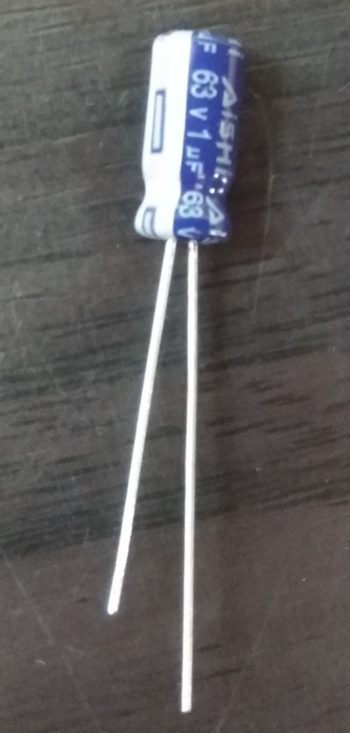
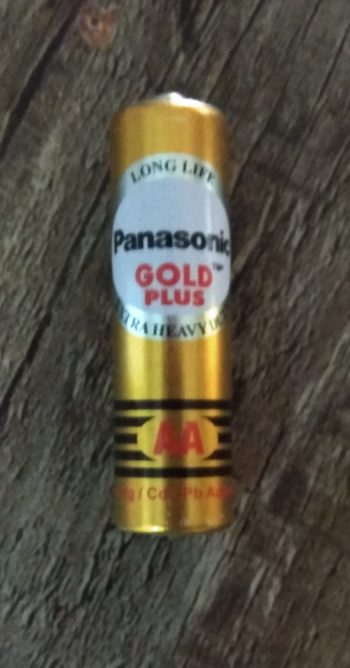
Capacitor is a basic storing device. It stores voltage.
In a way, a capacitor is a little like a battery. Although they work in completely different ways, capacitors and batteries both store electrical energy. Inside the battery, chemical reactions produce electrons on one terminal and absorb electrons on the other terminal. A capacitor is much simpler than a battery, as it can’t produce new electrons — it only stores them.
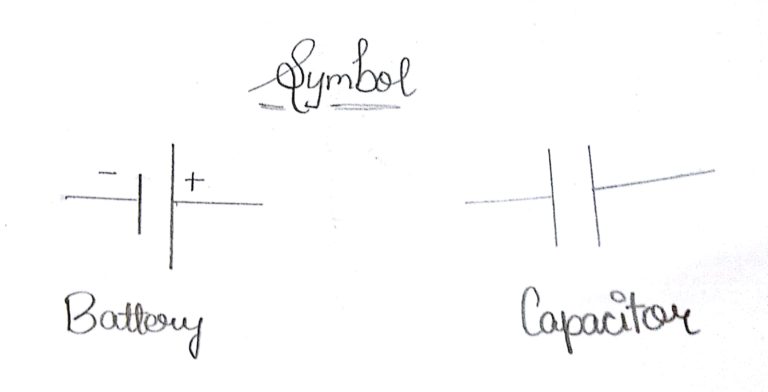
Inside the capacitor, the terminals connect to two metal plates separated by a non-conducting substance,or dielectric.
In theory, the dielectric can be any non-conductive substance. However, for practical applications, specific materials are used that best suit the capacitor’s function. Mica, ceramic, cellulose, porcelain, Mylar, Teflon and even air are some of the non-conductive materials used. The dielectric dictates what kind of capacitor it is and for what it is best suited. Depending on the size and type of dielectric, some capacitors are better for high frequency uses, while some are better for high voltage applications. Capacitors can be manufactured to serve any purpose, from the smallest plastic capacitor in your calculator, to an ultra capacitor that can power a commuter bus. NASA uses glass capacitors to help wake up the space shuttle’s circuitry and help deploy space probes. Here are some of the various types of capacitors and how they are used.
Air – Often used in radio tuning circuits
Mylar – Most commonly used for timer circuits like clocks, alarms and counters
Glass – Good for high voltage applications
Ceramic – Used for high frequency purposes like antennas, X-ray and MRI machines
Super capacitor – Powers electric and hybrid cars
How Capacitors Work
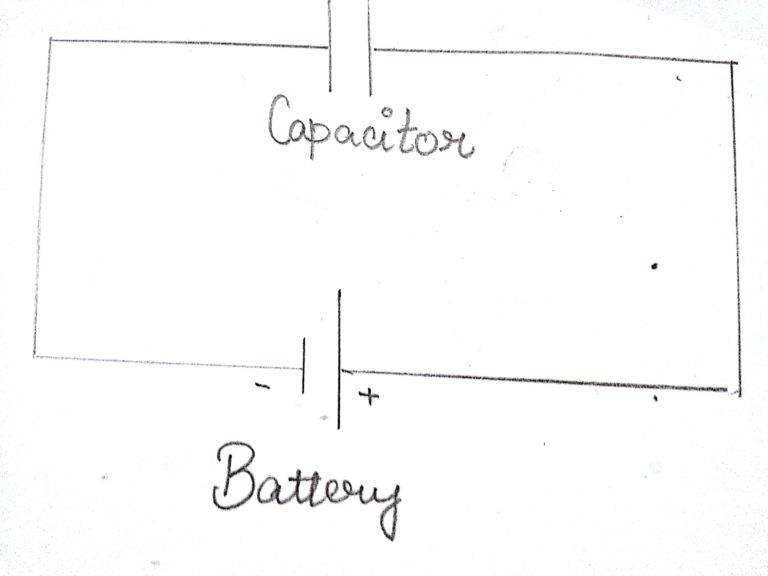
The plate on the capacitor that attaches to the negative terminal of the battery accepts electrons that the battery is producing.
The plate on the capacitor that attaches to the positive terminal of the battery loses electrons to the battery.
Once it’s charged, the capacitor has the same voltage as the battery (1.5 volts on the battery means 1.5 volts on the capacitor). For a small capacitor, the capacity is small. But large capacitors can hold quite a bit of charge. You can find capacitors as big as soda cans that hold enough charge to light a flashlight bulb for a minute or more.
Even nature shows the capacitor at work in the form of lightning. One plate is the cloud, the other plate is the ground and the lightning is the charge releasing between these two “plates.” Obviously, in a capacitor that large, you can hold a huge amount of charge!
Let’s say you hook up a capacitor like this :
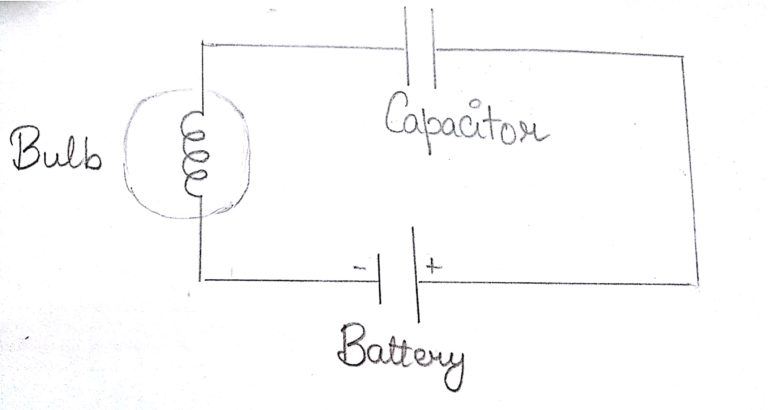
Here you have a battery, a light bulb and a capacitor. If the capacitor is pretty big, what you will notice is that, when you connect the battery, the light bulb will light up as current flows from the battery to the capacitor to charge it up. The bulb will get progressively dimmer and finally go out once the capacitor reaches its capacity. If you then remove the battery and replace it with a wire, current will flow from one plate of the capacitor to the other. The bulb will light initially and then dim as the capacitor discharges, until it is completely out.
In the next section, we’ll learn more about capacitance and take a detailed look at the different ways that capacitors are used.
Farad :
A capacitor's storage potential, or capacitance, is measured in units called farads. A 1-farad capacitor can store one coulomb of charge at 1 volt. A coulomb is 6.25e18 (6.25 * 10^18, or 6.25 billion billion) electrons. One amp represents a rate of electron flow of 1 coulomb of electrons per second, so a 1-farad capacitor can hold 1 amp-second of electrons at 1 volt.
A 1-farad capacitor would typically be pretty big. It might be as big as a can of tuna or a 1-liter soda bottle, depending on the voltage it can handle. For this reason, capacitors are typically measured in microfarads (millionths of a farad).
To get some perspective on how big a farad is, think about this :
A standard alkaline AA battery holds about 2.8 amp-hours.
That means that a AA battery can produce 2.8 amps for an hour at 1.5 volts (about 4.2 watt-hours — a AA battery can light a 4-watt bulb for a little more than an hour).
Let’s call it 1 volt to make the math easier. To store one AA battery’s energy in a capacitor, you would need 3,600 * 2.8 = 10,080 farads to hold it, because an amp-hour is 3,600 amp-seconds.
If it takes something the size of a can of tuna to hold a farad, then 10,080 farads is going to take up a LOT more space than a single AA battery! Obviously, it’s impractical to use capacitors to store any significant amount of power unless you do it at a high voltage.
Applications :
HThe difference between a capacitor and a battery is that a capacitor can dump its entire charge in a tiny fraction of a second, where a battery would take minutes to completely discharge. That’s why the electronic flash on a camera uses a capacitor — the battery charges up the flash’s capacitor over several seconds, and then the capacitor dumps the full charge into the flash tube almost instantly. This can make a large, charged capacitor extremely dangerous — flash units and TVs have warnings about opening them up for this reason. They contain big capacitors that can, potentially, kill you with the charge they contain.
Capacitors are used in several different ways in electronic circuits :
Sometimes, capacitors are used to store charge for high-speed use. That’s what a flash does. Big lasers use this technique as well to get very bright, instantaneous flashes.
Capacitors can also eliminate ripples. If a line carrying DC voltage has ripples or spikes in it, a big capacitor can even out the voltage by absorbing the peaks and filling in the valleys.
A capacitor can block DC voltage. If you hook a small capacitor to a battery, then no current will flow between the poles of the battery once the capacitor charges. However, any alternating current (AC) signal flows through a capacitor unimpeded. That’s because the capacitor will charge and discharge as the alternating current fluctuates, making it appear that the alternating current is flowing.